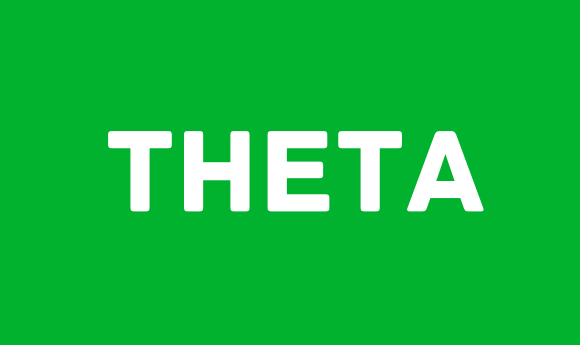University of Arizona
From Scattered to Scaled
How the University of Arizona manages 2TB of lecture capture video weekly

Achievements
40,000 Students Access Video Lectures
270K Hours of Video Viewed In One Year
2 TB of Video Data Produced Per Week
The Challenge
Like most institutions, the University of Arizona discovered the potential value of adding lecture capture to the learning experience through small-scale experimentation, with the university’s departments leading the way.
Always on the lookout for new tools to help students learn, many of UA’s schools and departments had independently decided to invest in lecture capture technology. In just a few short years, select lecture halls around campus found themselves awash in an array of lecture capture hardware – each featuring different appliances, capabilities, vendors, and support requirements, depending on what technology any given department had invested in.
While managing each system had its own challenges, the technology garnered interest. Lecture capture allowed faculty to record their largest class sessions and make them available to students using Apple’s Podcasting platform. Students, in turn, found the recorded presentations to be essential study aids, making it easier to actively participate in classroom discussions instead of worrying about writing down every possible note.
As interest grew, faculty began looking beyond just their largest lectures and began expressing interest in capturing discussion sessions, lab demonstrations, blended-learning techniques, and virtually every other lesson format. Yet as faculty sought out new opportunities to leverage the new video tools their departments had implemented, the same three challenges began appearing over and over.
The first stumbling block was one common to academic video – the hardware itself. Many of the university’s first lecture capture installations were hardware-based solutions built around specialized, expensive recording appliances that resided permanently in lecture halls. This lack of mobility limited the usefulness of those first solutions – they offered faculty no means to record video from their offices or capture examples remotely in the field or the lab.
The second issue was that, for students who took classes across multiple departments, having multiple lecture capture solutions meant an inconsistent experience. Students had to independently remember how to locate and play each video from each class. Video quality was also highly variable – some systems supported high-definition and multiple video sources. In contrast, others provided only a single, fixed camera in the back of the room.
Third, and perhaps most challenging of all, were the demands for support the departmental approach has placed on all of the university teams involved. It was an enormous task to support the myriad tools, to say nothing of managing all the various software updates and recognizing and addressing technical issues with each as they popped up.
Taking all it had learned and applying a proactive approach, Arizona’s CIO team sought to find a single solution that could not only solve the challenges the previous systems had experienced but also affordably and reliably scale up to meet the growing video needs of nearly 50,000 faculty, staff, and student users across campus.
The Solution
In Panopto, UA found exactly the video platform it had been looking for – versatile, easy-to-use software that made it possible to record, share, and stream video using the hardware the university already had. Panopto was easy to deploy across campus – the Panopto recorder could be quickly installed on virtually any computer, and Panopto’s web-based video library could be accessed in any web browser. Faculty members were thrilled to find Panopto integrated seamlessly with the university’s existing learning management system, Brightspace (formerly Desire2Learn).
“One of the best things about Panopto has been their level of support,” says Mark Felix, Director of Instructional Support at the University of Arizona Office of Instruction and Assessment. “Panopto’s been a nice fit on the product side and an excellent partnership on the support side.”
Along with assisting in the campus-wide implementation, Panopto has worked closely with the OIA and EIS teams to help the university continue to make the most of its video infrastructure and investment. When the UA team sought to optimize bandwidth utilization by splitting its video storage – in the cloud for lower priority files and on local servers for more frequently accessed materials – the team really began to see what makes Panopto different.
“We’d expected the usual vendor response –‘we’ll make a feature request and talk about it for the next six months,’” says Felix. “But with Panopto, everything was doable. That same day they opened a ticket, jumped into our systems, and helped us line up our cloud accounts. It was so much more than we expected.”
And when it comes to technical collaborations, Panopto’s support team continues to be there for Arizona. “Every time we’ve provided feedback or feature requests or asked for Panopto to find a way to partner with the other companies and technologies with use here on campus, Panopto has always been willing to come to the table,” Felix says. “In fact, not long ago one of our directors had a call with Panopto and another vendor. I think it was one of the happiest calls she had that year – she was smiling for weeks.”
With the right video platform in place, the UA team could then turn its attention to the most important step of all – helping the university’s faculty, staff, and students make the most of the new opportunity. To make sure it was, UA created two initiatives to support faculty:
First, it established a bi-weekly training session open to anyone on campus. This provided faculty and department facilitators an open door for learning how to use Panopto and get any of their questions answered. Compared to the one-off support each department required previously, offering a single, regular session to support one centralized video platform was a much more efficient use of the team’s time.
Secondly, for faculty looking to use video to help flip their classrooms or offer other blended learning experiences with video, OIA staff created a module in an existing mini-course to both increase faculty’s technical understanding of video and help them craft compelling content. Several workshops were also developed for both the faculty and staff that support the product. In addition, the university quickly ramped up the number of support staff who knew how to use the tool so that support was never far away. Lastly, it made prodigious use of Panopto’s online support documentation and wrote little materials.
The University of Arizona Library system is one of the largest adopters of the new video platform. Noticing the ability to easily upload and securely deliver multimedia to students no matter their location, the library migrated from its previous multimedia streaming solution to Panopto. The software’s adaptive bitrate streaming ensured that all students could smoothly view their class videos, whether on the campus network or at the coffee shop down the street.
“Panopto’s been a nice fit on the product side, and an excellent partnership on the support side.”
Mark Felix, Director of Instructional Support, University of Arizona Office of Instruction and Assessment
The Impact
With a student population of more than 40,000 and lecture capture in wide use across campus, the University of Arizona has fully embraced academic video. And it has some impressive engagement numbers to show for it.
Each week, Arizona’s faculty produces more than two terabytes of data. Over the last year, their lecture capture totaled nearly 30,000 hours of recorded content. Just as impressive is how students engage with all that material. In the last year, students at Arizona have viewed nearly 270,000 hours of video—studying for tests, catching up on classes, and owning their learning experience.
For the University of Arizona, the experience has been everything it had hoped—not only in fulfilling the school’s commitment to making academic video available anywhere on campus but also in building an excited community of students and instructors who now rely on video as a key part of the university experience.
With Panopto providing a solid foundation in lecture capture and video content management, the University of Arizona is at the forefront today. With new opportunities to better engage students, the university is raising its profile as a blended and online learning leader.






